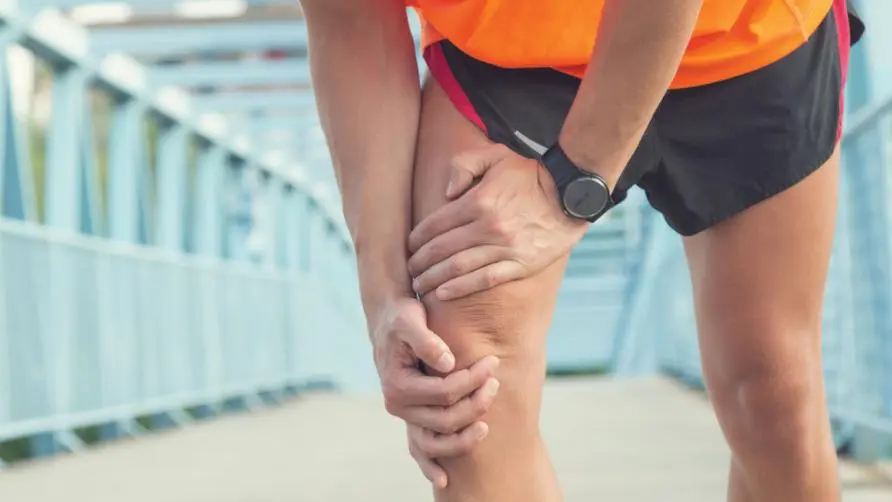Does playing football hurt your knees? How to avoid injuries while playing basketball and volleyball? Doctors reveal: Only by doing "1 training" can the effect be achieved

Is football the sport that hurts the knees the most? Is the risk of injury in basketball and volleyball also very high?
The World Football Championship is currently in full swing, and many football players are prone to falling due to tackles and dribblings. Previously, star Neymar’s rolling action during the 2018 World Cup even attracted a large number of netizens to laugh at . Dr. Scott, interviewed by “One Minute Fitness Classroom”, said that the rolling posture after falling to the ground can indeed reduce the impact of the ground on the knees, which can be regarded as a measure to protect joints.
Dr. Scott explained that in addition to the football currently being played, volleyball involves jumping, diving, and saving, which may indeed increase the risk of knee injuries. Furthermore, basketball requires a lot of running and body collisions. Knee injuries may also occur. Clinically common sports injuries such as cruciate ligament rupture, meniscus wear, etc. all require rehabilitation or reconstructive surgery to treat.
As for running sports such as jogging and marathon, although they do not involve strenuous sprints or physical collisions, they may still cause knee injuries, such as runner’s knee (also known as patella pain syndrome) and iliotibial band syndrome, which are more common among runners. 2 big problems. The former is prone to symptoms such as soreness, tightness, and pain on the front of the knee, and tends to occur within 1 week after exercise; iliotibial band syndrome more commonly occurs during road running, with pain on the outside of the knee.
How to avoid knee injuries while playing basketball? Doctors reveal: Doing “1 training” can prevent
Before football players realize they are injured, they will roll to reduce the damage; as for basketball and volleyball, how can they avoid knee injuries? Dr. Scott emphasized that the current scientifically proven and effective way to strengthen joints is “weight training.” Strength training strengthens muscles and helps stabilize joints, making it a viable strategy to avoid injuries while playing basketball and volleyball.
Dr. Scott explained that ligaments are “passive tissues” that are easily pulled and have little potential for strengthening through exercise; muscles are “active tissues” that can be strengthened through training. In addition, the strengthened lower limb muscles can further help stabilize the knee joint, protect the ligaments and minimize injuries. Therefore, moderate squats and deadlift training are indeed beneficial to joint strengthening.
As for the “knee pads” or “elbow pads” often worn by basketball and volleyball enthusiasts, are they helpful in reducing joint injuries? Dr. Scott explained that protective gear is of limited help in preventing knee injuries. However, if the knee has an old injury or is in a state of rehabilitation, protective gear can indeed protect the joints. However, if there has been an old injury to the knee joint, it is recommended that regular follow-up treatment be the main method.
Can you still exercise after a running injury? Does stretching before exercise not help training performance?
With the recent popularity of road running activities, does it mean that the number of injuries in clinics has increased? Dr. Scott revealed that recently, many patients suffering from runner’s knee and iliotibial band syndrome have come to see us. The first priority at this time is to stop running, mountain climbing and other activities that can easily cause knee impact, or reduce the amount of running. If exercise is not an option, flywheel, non-climbing cycling, swimming, etc. can be used instead. In addition, you can also discuss with your doctor the use of anti-inflammatory analgesics, rehabilitation (heat and pressure therapy), manual reduction or relaxation therapy and other measures.
Dr. Scott reminds the public that taking exercise measures step by step is the key to avoiding sports injuries. For example, if you currently want to participate in a 10-kilometer marathon, you should have previous experience in running events of more than 5 kilometers, and you must have at least 50% of the mileage to participate in the event. This is a low-risk and safe option. “If you are unfortunately injured, you should immediately apply ice to the affected area or uncomfortable area; if the pain is severe and lasts for several days, you should seek medical treatment immediately!”
Finally, Dr. Scott reminded that from the perspective of injury prevention, it is necessary to warm up before exercising. You can first warm up the body with low-intensity activities. For example, runners can jog for about 1 kilometer at a low speed, If you slowly increase the speed, the effect of stretching before exercise will be limited. After exercise, you must remember to supplement nutrition. Appropriate supplementation of carbohydrates and proteins can promote muscle repair and make nutrients easier to absorb.
Further reading:





